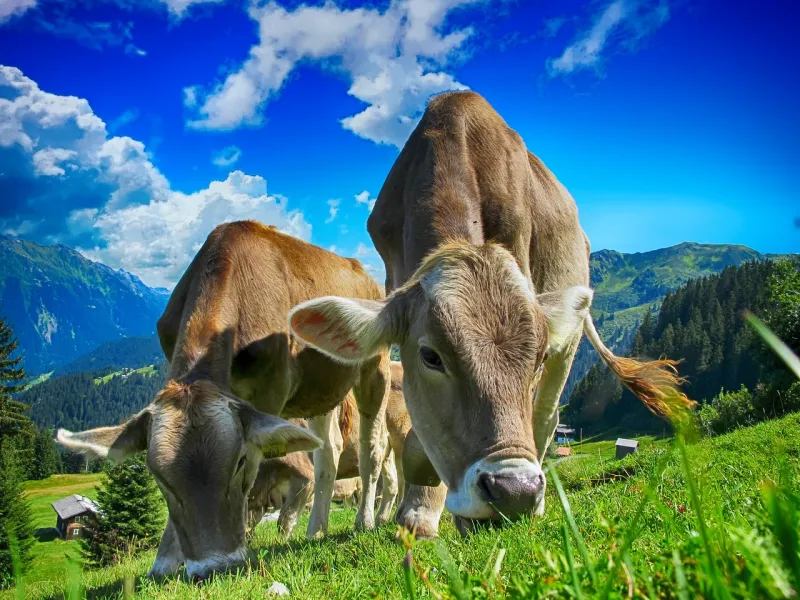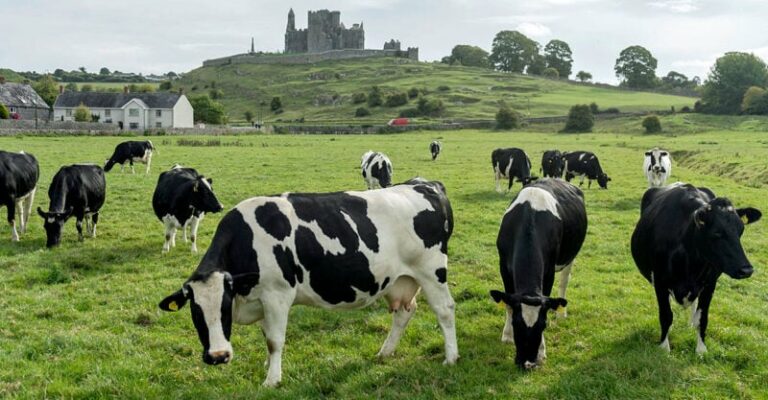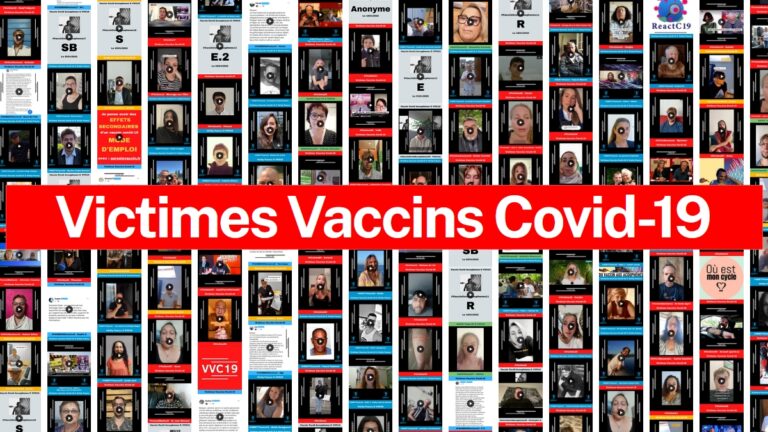Bird flu in cattle – inconsistencies and questions (Part 1)
Source: TKP.at, DDr. Siguna Müller, originally published 07 May 2024
In recent weeks, there have been increasingly worrying reports about the widespread occurrence of the highly pathogenic avian influenza A (H5N1) virus of clade 2.3.4.4b. Until March 2024, there were no outbreaks of this virus clade in domestic cattle. Then, on 25 March, US federal officials announced that the highly pathogenic avian influenza strain had been detected in dairy cows. By 27 April 2024, the USDA confirmed “infections” with this strain in 34 dairy herds in nine US states.
The press has repeatedly warned that the virus could evolve, gain virulence and adapt to humans. Although officials and MSM constantly use terms such as “infected”, “virus” and “confirmed”, it is unclear what has been proven. Was it merely genetic fragments or a real virus that had jumped species and learnt to infect and sicken mammals such as cattle?
Of course, HPAI viruses can be transmitted from wild birds to domestic poultry and other bird and animal species. The FDA admits that while avian influenza viruses do not normally infect humans, there have been isolated cases of human infection. What it does not admit is that none of these infections have ever led to a pandemic, even though fears are repeatedly expressed that one is imminent.
It is worth noting that the Department of Agriculture USDA and China have been working on H5N1 avian influenza research since 2021 – the year the current outbreak apparently began. John S. Leake and Nicolas Hulscher point out that, shockingly, this work was done via serial transmission through mallards – “the most abundant, widespread duck on Earth, which can interbreed with 63 other species.” If it escaped from a lab, it would likely infect the wild migratory ducks that fly all over North America and Eurasia, contaminating literally “EVERYTHING”.
Ignoring the obvious gaps in the current story of how the virus came to North America, the WHO is once again blaming nature rather than man-made lab work, but warns,
“Scientists fear that if the H5N1 virus spends more time in mammals, it could evolve to infect humans more easily and spread through the air. “
A closer look at the emerging story has revealed numerous parallels with the COVID-19 pandemic, as well as additional inconsistencies and serious problems.
The focus of recent weeks
One unique aspect of the new narrative is that of food and feed. On 23 April 2024, Politico reported “Bird Flu Virus Fragments Detected in Retail Milk in U.S.“.
The article immediately contradicts itself (some might think it is intentionally misleading).
Politico admits that “it’s still unclear whether the detected virus was active”. But they repeatedly emphasise that “the virus” has been detected.
In the meantime, numerous media outlets have reported on the presence of the virus. But when it comes to how the virus was isolated and whether an active virus was found, we encounter gaps and inconsistencies. For example, on 25 April 2024, the FDA announced that in milk,
“about 1 in 5 of the samples tested at retail are positive for HPAI virus fragments…”.
Remarkably, the FDA goes on to say that this is not indicative of a live virus, emphasising that
“As noted above and stated in our summary below, qPCR-positive results do not necessarily represent an actual virus that could pose a risk to consumers. Further testing is needed to determine if the intact pathogen is still present and infectious, which would help determine if there is a risk of illness if the product is consumed. The FDA tests all positive findings using egg inoculation tests, the gold standard for determining whether an infectious virus is present.”
The main message is that there is currently no infectious virus in retail milk. However, the press paints a different picture.
“The ‘milk supply is safe’: Biden administration seeks to reassure Americans as bird flu spreads,” they say. These and many other media emphasise the presence of the pathogen – as if it had been confirmed and the live virus had been detected.
What are we dealing with – virus fragments or a whole live virus?
I have seen no clear independent confirmation that a viable virus has been found. The way it is being spread by the MSM seems convincing. For example, on 25.4.24 we were told that
“avian influenza has been detected in 33 dairy herds in eight states, according to the latest data from the USDA.”
Then the journal Nature writes in its 27/4/24 issue that RNA tests have shown that the avian flu virus has been spreading for months, much longer than previously thought. We are informed that the FDA
“confirmed infections with the strain called H5N1 in 34 dairy herds in nine states by 30 April”.
I cannot comment on why this date is given three days after the article was published. What is important is that in the meantime, not only are the authorities talking about a real virus (and not just fragments), but also that they now claim to have a clear understanding of the origin of said “virus”.
“The outbreak likely began when the virus jumped from an infected bird to a cow, probably in late December or early January last year.”
Note the similarity to the alleged zoonotic origin of SARS-CoV-2 – an undetected jump between species. For the avian flu virus, such a “one-time spillover” is thought to have occurred in late December or early January. Since then there has been
“an extensive, undetected spread of the virus – suggesting that more cattle than previously reported may have been infected with avian influenza in the United States and even in neighbouring regions.
There is still concern that the virus is spreading “beyond symptomatic dairy herds”. I am not suggesting that COVID-19 was only asymptomatic, but we know that the disease was mild in the vast majority. Since SARS-CoV-2 is similar to seasonal flu, the mortality rate was orders of magnitude lower than the alarming 3.4% predicted by the WHO.
Ironically, the USDA now emphasises that its agency, along with the CDC, state veterinary agencies and public health officials, is investigating the “disease in dairy cows” even though the alleged spread of avian flu had begun asymptomatically.
So what does this disease look like?
Clinical signs
Cattle allegedly infected with the avian influenza virus usually show no symptoms. Although the USDA also lists some clinical signs, they are all extremely mild (see figure below)

Source: https://www.aphis.usda.gov/sites/default/files/hpai-livestock-case-definition.pdf
I find it ironic that the focus here is not entirely on the allegedly affected animal. Rather, it shifts to the milk – and therefore the consumer. The information comes across as: “The milk looks abnormal. It may be dangerous.”
Diagnostic criteria
The definition of a “case” is precisely defined by the USDA. One criterion is the way in which thealleged pathogen causes disease in the animals. However, as just described, there are no clear clinical signs. Nevertheless, the USDA emphasises that “the virus has been classified as highly pathogenic by cleavage site analysis and bioassay testing.” This certainly helps to fuel fears, even though the attribute “highly pathogenic” refers to severe effects in birds and not in humans.
The second diagnostic criterion determines the selection of samples. These are taken from milk and mammary gland tissue – but only in lactating animals; in non-lactating animals, deep nasal swabs are to be used instead (why does this sound familiar?).
(Note: The heavy concentration on milk – where the virus is said to be found in surprisingly high concentrations – makes it appear that the virus poses the greatest risk to consumers – and indeed, on 15 April, Colombia restricted imports of beef and beef products from the US because of avian flu in dairy cows. Yet the “diagnosis” is being shifted to nasal discharge. I have never analysed such discharge, but Ihave seen where these animals stick their noses! Of course, cattle ingest and inhale all sorts of environmental pathogens, which are then filtered through their mucosal immune system. It should therefore come as no surprise that environmental genetic material can be detected in nasal swabs. This does not mean that the animal is infected with a pathogen, i.e. that these viruses can enter the animal’s cells, multiply and cause disease, or that this pathogen could be transmitted in any way and harm other cows or those who consume their products)
The final “diagnostic” step relies on real-time polymerase chain reaction (PCR) testing. The USDA writes that a “strain-specific PCR test is available for pathotyping for H5 clade 2.3.4.4b at NVSL.”
I don’t think I need to repeat the details of the “diagnostic” disaster we had with the “detection” of SARS-CoV-2. Numerous errors in the misuse of the PCR test have been clearly exposed (many of which I have summarised in my book).
Even with the avian flu virus, we don’t know whether the “test” is falsely picking up contaminants, real virus fragments or a whole virus. Is there evidence of a live virus infecting cattle, and if so, what is its load? Or are most positive cases simply false positives due to the insane Ct levels?
Case definition
The USDA distinguishes between a “suspected case“, a “presumptive positive case” and a “confirmed positive case“. It is important to note that in the first two cases, the disease is not a decisive key parameter. The animal does not have to show any clear clinical signs. A presumptive positive case is determined, for example, by “rRT-PCR with or without compatible disease”.
Here we go again! Mullis, the original inventor of the PCR test, specifically pointed out that this powerful routine should not be used for diagnostic purposes. There are many important applications, but not for diagnosing disease, especially if the animal does not even show characteristic clinical signs – or none at all!
Based on a positive PCR test, the USDA promises to identify a “Confirmed Positive Case” by
“Identification of HPAI H5N1 clade 2.3.4.4b NVSL by a molecular test; whole genome sequencing is performed to determine the genotype.”
However, despite greatly reduced costs and improved technologies for whole genome sequencing, this is still an enormous effort and cannot really be carried out on a large scale. In a feared, staged or real pandemic, it will certainly be impossible to perform WGS for all the many animals affected.
Genetic testing
On 21 April 2024, the USDA published the genetic sequences of the H5N1 influenza A virus on a publicly accessible website. It stated that it had made 239 genetic sequences of the US H5N1 influenza virus clade 2.3.4.4b publicly available. It is important to recognise what this is about.
There is no indication that these are “proven isolates” coming exclusively from “infected” cattle.
I think it is questionable whether this proves that the WGS was explicitly and exclusively derived from a virus isolated exclusively from cattle. Cattle are exposed to viral genetic contaminants in a variety of ways. There is no evidence that this exogenous genetic material has been separated from genetic information derived from a virus that has allegedly managed to live and replicate in cows.
Although the USDA data package contains about 10 gigabytes of sequencing information from 239 animals, including cows, chickens and cats, to the dismay of many, the published data does not include certain critical information. According to Nature, scientists lack information about the exact date each sample was collected and the state in which it was collected,” describing these gaps as “very abnormal.”
Outlook
The recent story that the avian virus was able to infect and replicate in cattle is now being used to drive vaccine development and deployment. In Part 2, we will look at the inconsistencies and contradictions surrounding the current narrative.








